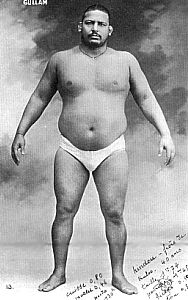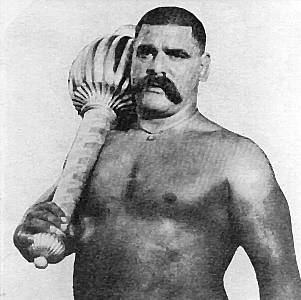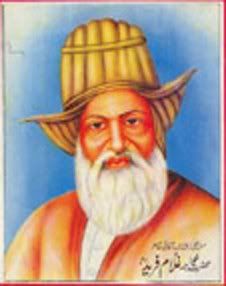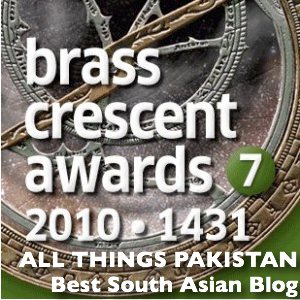Darwaish
 There was a time when being a Pehalwan was a way of life, an art and a passion.
There was a time when being a Pehalwan was a way of life, an art and a passion.
Thousands of people used to watch Rustum-i-Pakistan which was a very popular event in Lahore (just like a one day cricket game these days). You could easily find many Ukhara’s or Akhara’s (kinda small stadiums where traditional wrestlers exercise) in the city with Pehalwans doing their routine exercises but not anymore.
I have some wonderful childhood memories of having Khalis Lassi (sorry folks, I don’t know what Lassi is called in English but Khalis means Pure) near Pehalwani neighborhoods just behind Lahore Fort.


Going there once in a month with family for traditional Lahori Nashta+Lassi was just great. Not to mention some serious exercise was a must and we used to skip lunch after having that Nashta+Lassi. I don’t know if the quality and taste is still the same, I haven’t been there in ages which is sad.
Read Full Post
gadagar
 Gentrification is relatively a contemporary term that was first used in ‘London: Aspects of Change’ by Ruth Glass in 1964. Literally it means a planned change in the population of land users in such a way that the new users are of a higher socio-economic status than the last users. Along with this there is also a change in the constructed environment through an investment in the fixed capital. The noticeable changes of gentrification are dependent on the differences in the socio-economic status of the new and older residents. Gentrification is not confined by time limitation and hence even though the term is relatively new, any process that fits that basic description of displacement/replacement of one group for another would constitute gentrification. Some other rules that would qualify a process as a process of gentrification include the fact that gentrification is mostly an inner city process, it takes places mostly in residential areas, and that it involves the rehabilitation of unmaintained buildings even if they are architecturally attractive.
Gentrification is relatively a contemporary term that was first used in ‘London: Aspects of Change’ by Ruth Glass in 1964. Literally it means a planned change in the population of land users in such a way that the new users are of a higher socio-economic status than the last users. Along with this there is also a change in the constructed environment through an investment in the fixed capital. The noticeable changes of gentrification are dependent on the differences in the socio-economic status of the new and older residents. Gentrification is not confined by time limitation and hence even though the term is relatively new, any process that fits that basic description of displacement/replacement of one group for another would constitute gentrification. Some other rules that would qualify a process as a process of gentrification include the fact that gentrification is mostly an inner city process, it takes places mostly in residential areas, and that it involves the rehabilitation of unmaintained buildings even if they are architecturally attractive.
Read Full Post
A cross post from Raza Rumi‘s jahan-e-Rumi
 Recently while going through some of my late grandfather’s books, I was struck by a feeble looking deewan of Khowaja Fareed. Feeble because it bore the date of 1964 for its inclusion in his impressive book collection. Expressing the thrill of holding a book which had travelled 44 years in time to reach me is beyond words. Needless to say with what intensity the book’s contents kept me immersed in them for almost two hours with un -interrupted focus which is a rare event in an ever-reaching-out-to-meet-a-target kind of life style we are used to.
Recently while going through some of my late grandfather’s books, I was struck by a feeble looking deewan of Khowaja Fareed. Feeble because it bore the date of 1964 for its inclusion in his impressive book collection. Expressing the thrill of holding a book which had travelled 44 years in time to reach me is beyond words. Needless to say with what intensity the book’s contents kept me immersed in them for almost two hours with un -interrupted focus which is a rare event in an ever-reaching-out-to-meet-a-target kind of life style we are used to.
Khowaja Ghulam Fareed is one of a very few Sufi poets of Sub-continent who had an equal command over Arabic, Persian, Urdu, Hindi, Siraiki and Marawari languages. A rare and enthralling blend of these languages is found in his Kafis.
Read Full Post
 There was a time when being a Pehalwan was a way of life, an art and a passion.
There was a time when being a Pehalwan was a way of life, an art and a passion.


 Recently while going through some of my late grandfather’s books, I was struck by a feeble looking deewan of Khowaja Fareed. Feeble because it bore the date of 1964 for its inclusion in his impressive book collection. Expressing the thrill of holding a book which had travelled 44 years in time to reach me is beyond words. Needless to say with what intensity the book’s contents kept me immersed in them for almost two hours with un -interrupted focus which is a rare event in an ever-reaching-out-to-meet-a-target kind of life style we are used to.
Recently while going through some of my late grandfather’s books, I was struck by a feeble looking deewan of Khowaja Fareed. Feeble because it bore the date of 1964 for its inclusion in his impressive book collection. Expressing the thrill of holding a book which had travelled 44 years in time to reach me is beyond words. Needless to say with what intensity the book’s contents kept me immersed in them for almost two hours with un -interrupted focus which is a rare event in an ever-reaching-out-to-meet-a-target kind of life style we are used to.






















































